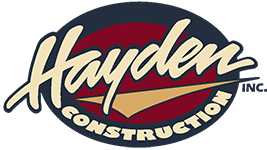one call & we handle it all
24/7 emergency service
Our Location
- 2150 Fayetteville Rd
Rockingham, NC 28379 - (877) 586-2924
- tim@haydenconstructioninc.com
- 24/7 Emergency Service
Contact Us
No, you’re not hearing a foreign language when HCI Fire and Water Restoration describes their process to restore your home or business. Below are some helpful definitions so you can feel confident knowing you’re understanding what everyone is saying.
If you have any questions, don’t hesitate to contact HCI Fire and Water Restoration. We’re on call 24/7 to explain any aspect of disaster restoration. We are proud to serve our neighbors in Moore, Anson, Scotland, and Richmond Counties.
Air Movers – We use air movers for water damage to create high-volume air movement across a wet surface, particularly carpeting, to facilitate the drying process.
Air Scrubbers – Air scrubbers are portable filtration systems that remove particles, gasses, or chemicals from the air within a given area. These machines draw air in from the surrounding environment and pass it through a series of filters to remove contaminants.
Anti-Microbial / Germicide – Anti-Microbial/Germicide inhibits the growth or existence of an organism. It has the ability to stop, limit, or control the growth of fungi, bacteria, and other micro-organisms.
Certified Microbial Remediation Supervisor – Supervisors who conduct microbial remediation and microbial removal projects in the indoor environment. A CMRS can design and maintain effective containment and can control pressure relationships during a project. A CMRS can safely clean, treat, or remove structures and contents affected by microbial contamination. A CMRS can also design remediation protocols or follow established protocols and industry standards.
Chemical Sponges – Chemical sponges are designed specifically to remove dry and wet fire soot from surfaces prior to thorough cleaning.
Containment – Containment is generally used in mold remediation to limit the release of mold spores into the air and to prevent cross-contamination to other areas of the property.
Dehumidifiers – Dehumidifiers are equipment used to remove evaporated moisture from the air. They draw in moisture from the environment and condense it for easy removal.
Desiccant Dehumidifier – Desiccant dehumidifiers are used to remove high levels of moisture. They contain particles and filters that attract moisture.
HEPA Filters – High-Efficiency Particulate Air (HEPA) filters are types of air filters. Filters meeting the HEPA standard have many applications, including use in medical facilities, automobiles, aircraft, and homes. To qualify for the standards of efficiency set by the United States Department of Energy, a HEPA air filter must remove 99.97% of all particles greater than 0.3 micrometer from the air that passes through.
Injectidry Systems – Injectidry systems are trapped-moisture-ventilating systems which use a series of hoses placed inside small holes drilled into affected area. They are then connected to a main line to allow airflow to areas with moisture in hard-to-reach places.
Moisture Meters – Moisture meters detect the location of moisture in an area.
Negative Air – Negative air is an air pressure system that creates a vacuum in an area to draw in the air, which is then linked to an air filtration system. Anything floating in the air gets drawn into the system and filtered out. In an area where this system is required, we will contain the space with plastic sheeting to create the negative pressure.
Ozone Treatment – Ozone treatments are used to destroy bacteria by oxidation. Ozone contains three atoms of oxygen instead of the two atoms that we normally breathe. By filtering the air and adding the additional atom, it destroys bacteria, odor, etc. Once the treatment is turned off, the air in your environment reverts to regular oxygen we breathe. PLEASE NOTE: It is not advised to remain in your home/property while an ozone machine is running.
Personal Protective Equipment / Respirators – Personal protective equipment and respirators are used to protect our technicians from injury.
Smoke & Odor Control – Smoke and odor is controlled by using specialized machines to return air quality to its natural state.
Thermal Fogging – Thermal fogging uses heat to produce a smoke-like fog that naturally follows the path of smoke and produces an enzyme to eliminate odors.
Thermo-Hygrometer – Thermal hygrometers are used to measure air temperature and humidity, allowing the technician to calculate the correct formula to establish a balanced drying system.
Thermal Imaging – Thermal imaging equipment is used to determine temperature changes in building materials. An example would be moisture evaporating in sheetrock.
Ultrasonic Sound Wave Treatment – An ultrasonic sound wave treatment uses a machine that uses sound waves in the cleaning process.
Water Extractor Equipment – Water extractor equipment is used to contain migrating water and remove water from your property once and for all.





